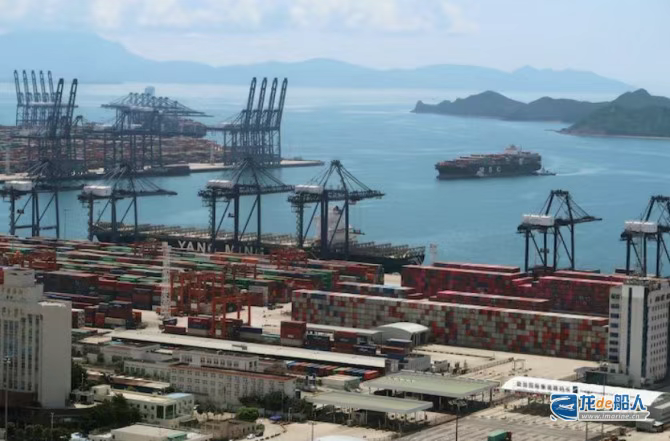The Nikkei Asia, a Japanese economic news outlet, recently reported that Japan’s shipbuilding industry is seeking to address the overwhelming growth of China and South Korea’s shipbuilding sectors by developing next-generation eco-friendly vessels and strengthening corporate cooperation.
Clarksons’ new shipbuilding price index has risen from 178.4 in 2023 to 189.2 in 2024, up 50% from the low point in 2020. Taking the data released by Clarksons on June 5 as an example, the new shipbuilding price index was 186.69, up 0.14% from the same period last year (186.42) and up 47% from April 2020 (127.32).
As new shipbuilding costs remain at a high level, the performance of Japanese shipbuilders has also improved. Japan Marine United (JMU), Japan’s second-largest shipbuilder, recorded a consolidated net profit of 19.9 billion yen (approximately US$136 million) in the fiscal year ending March, which was 5.4 times higher than the same period last year. By focusing on marine engines and port crane businesses, Mitsui E&S achieved a net profit of 39 billion yen (approximately US$267 million), up 60% year on year.

In recent years, with the rapid development of the shipbuilding industry in China and South Korea, Japan’s position in the global new shipbuilding market has gradually weakened. Clarksons data shows that among the new ship orders in 2024, Chinese shipyards account for 69%, South Korea accounts for 15%, and Japan accounts for only 7%.
In particular, in the field of liquefied natural gas (LNG) carriers, which are known for their high added value and high technical requirements, Japan’s shipbuilding industry has almost no competitiveness. In 2024, Chinese and Korean shipyards received orders for 56 and 37 LNG carriers respectively, while Japanese shipbuilders have only received a small number of orders since 2016. In this regard, relevant personnel from the Ministry of Land, Infrastructure, Transport and Tourism of Japan said: “The outcome of the competition for LNG carriers is a foregone conclusion.”
In order to save the shipbuilding industry, which no longer has a competitive advantage, Japanese shipbuilders are promoting a shipbuilding revival strategy through a national framework. The first step is to standardize the fuel tanks of ammonia-fueled ships, which are seen as the most promising next-generation environmentally friendly ships. Currently, there are eight different sizes and shapes of fuel tanks to choose from, but standardization can save design resources and facilitate capital investment decisions for shipbuilding suppliers.
In order to improve competitiveness with Chinese and Korean shipbuilders, Japan is providing financial subsidies of about 120 billion yen (about US$ 821 million) to 16 shipbuilders to promote the development of zero-emission ships, including ships operating on hydrogen and methanol fuels.
Currently, MILES (Marine-design Initiative for Leading Edge Solution), a joint venture between Imabari Shipbuilding, Japan’s largest shipbuilding group, and Mitsubishi Heavy Industries, is promoting the development of liquefied carbon dioxide (LCO2) carriers. The project partners include Imabari Shipbuilding, Mitsubishi Shipbuilding, JMU, and Japan’s three major shipping giants Mitsui OSK Lines, NYK Lines, and Kawasaki Kisen Kaisha. The participation of the three major shipping companies marks an important progress in the project in securing orders for the next generation of ships.
The MILES program is seeking other shipyards to participate in the project or purchase design solutions. Although there are concerns about disclosing design specifications to competitors, cooperation for the sake of the overall situation is a top priority. An official from Imabari Shipbuilding said: “If each shipyard acts alone, it will be difficult to match the R&D and construction speed of China and South Korea in terms of progress.”
In view of this, excessive competition in Japan’s shipbuilding industry is being eased with the formation of partnerships, but the influence of private family businesses is expanding. NYK personnel questioned: “Although the shipyards have reached an agreement on general principles, there are differences in details. Can they reach a consensus for the next step of cooperation?”
Last November, Dalian Shipbuilding Industry Corporation (DSIC), a subsidiary of China State Shipbuilding Corporation, delivered the world’s first commercial 7,500 cubic meter LCO2 carrier “NORTHERN PIONEER” for Norway’s Northern Lights. Its technology is ahead of MILES, further exacerbating Japan’s sense of crisis.
In addition, the sense of crisis in Japan’s shipbuilding industry is also reflected in the fact that many shipyards have announced their withdrawal from the shipbuilding industry.
Not long ago, Mitsui E&S Holdings, a long-established Japanese shipbuilding company, transferred the remaining 34% of Mitsui E&S Shipbuilding’s shares to Japan’s Tsuneishi Shipbuilding Group. After the transaction is completed, Mitsui E&S Shipbuilding will become a wholly-owned subsidiary of Tsuneishi Shipbuilding, marking that Mitsui E&S Holdings will completely withdraw from the shipbuilding business, which is its “ancestral business”.
Prior to this, Sasebo Heavy Industries and Sumitomo Heavy Industries announced their withdrawal from the shipbuilding industry in 2022 and 2024 respectively, reflecting the continuous decline of Japan’s shipbuilding industry.


